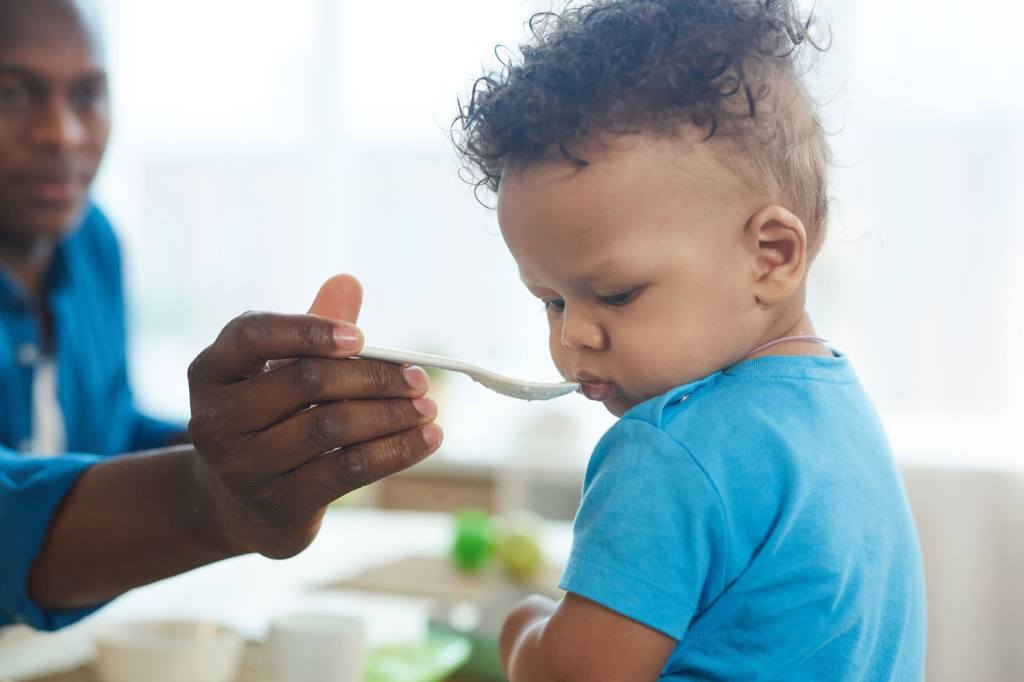Your cart is currently empty!
Oxytocin Bonding With Baby

Oxytocin is the hormone responsible for that warm feeling we get inside when we see someone we love. It influences brain development, social bonding, and pain management. Oxytocin is produced in the hypothalamus and released during childbirth, skin to skin, and breastfeeding.
What is Oxytocin?
Oxytocin is commonly referred to as the “love hormone or drug”. It increases during hugging, breastfeeding, and when you smell a newborn baby. An increase in oxytocin levels usually makes you feel warm and fuzzy inside!
Natural Oxytocin Flow
Oxytocin flows naturally, but the synthetic version, Pitocin, is commonly used for inductions and for managing postpartum hemorrhages for new mothers.
Oxytocin is responsible for contractions in labor and postpartum. There is also a release of oxytocin after birth that causes your senses to be intensified. This allows you to connect with the smell and feel of your baby, and them with yours. You may hear the term “golden hour” to describe the hour after birth when oxytocin flow and skin to skin facilitates mother-infant bonding.
Scientists have actually concluded that animals with high levels of oxytocin tend to be more nurturing to their offspring than those with lower levels. Oxytocin plays a major role in bonding.
Higher levels of oxytocin throughout pregnancy may cause mothers to engage in more maternal behaviors after giving birth. Bonding behavior practices, such as singing special songs and bathing an infant in a special way, have been observed (Scatliffe et al.).
There is no limit on oxytocin flow and bonding. Even if your baby is no longer a newborn you can still do different activities to increase your bond with your baby.

The Newborn Baby Smell
The newborn baby smell sets off the same oxytocin receptors in the brain that drugs set off. When women smelled baby clothes in a recent study (reported by the Smithsonian Magazine), MRI showed the parts of the brain associated with reward learning lighting up. The reaction appeared to be stronger in mothers and was similar to the reaction seen in patients using mental health drugs.

The Benefits of Oxytocin
1. Parent-Baby Bonding
Oxytocin is vital in bonding between a parent and baby
2. Stress Responses
Oxytocin lowers blood pressure and cortisol (stress hormone) levels. It serves as a great boost for your postpartum well-being and mental health.

Skin-to-Skin
When you spend time having skin-to-skin contact with your baby you will likely experience higher oxytocin levels. Take time to cuddle your baby and become familiar with how they smell and feel, allowing them the same opportunity to become familiar with you. This type of pair bonding is the ultimate way to increase your oxytocin system and strengthen the bond between you and your baby.
Skin to skin can be done while resting in bed, nursing, or baby-wearing. You can baby wear topless and place a large cardigan or zip-up hoodie over the carrier to stay warm.

Happy Food
Oxytocin can be found in a different variety of food, especially the ones containing Vitamin D, Vitamin C, magnesium and dietary fats: fatty fish, mushrooms, peppers, tomatoes, spinach, avocados are all great choices.

Oxytocin and Development
Research is suggesting that oxytocin responses actually increase IQ. A study showed that skin to skin promotes brain development in infants (Hardin et al.).
Mother and infant pairs that practiced “Kangaroo Care” showed increased oxytocin along with decreases in stress. Bonding during infancy can positively influence both neuro-development trajectories and an infant’s nervous system.
Sources
- JS Hardin, NA Jones, KD Mize, M. Platt. “Infant behavior and development parent-training with kangaroo care impacts infant neurophysiological development & mother-infant neuroendocrine activity.” Infant Behav Dev, 5 (2020), Article 101416.
- Scatliffe N, Casavant S, Vittner D, Cong X. “Oxytocin and early parent-infant interactions: A systematic review.” Int J Nurs Sci. 2019 Sep 12;6(4):445-453. doi: 10.1016/j.ijnss.2019.09.009. PMID: 31728399; PMCID: PMC6838998.












